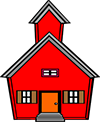Aboriginal Videos
First Nations, Inuit and Métis
Information about the importance of story telling in Aboriginal culture
- Legend of Weesakayjack - How North America came to be (Cree / Canada)
- The Turtle Story - Account of Earthquakes (Acjachemen / California)
- Grandmother Spider Brings the Sun (Navajo / Southeastern United States)
- Grandmother Spider Brings The Sun To Earth (Cherokee / Southeastern United States)
Resting on the shore, two kilometres south of Campbell River’s city centre, lies the forty foot tall Big Rock. An anomaly in the local landscape, this monolith has graced the shoreline for at least ten-thousand years. In its time as a denizen of Vancouver Island it has been at the core of thousands of stories. From Big Rock in Campbell River‘s website
- Inuit and Yupik people
- The Owl and the Raven (Inuit / Northern Canada)
- Girl Who Married the Moon ( Alutiiq / Kodiak Island/ Alaska)
Although the name “Eskimo” is commonly used … to refer to all Inuit and Yupik people of the world, this name is considered derogatory in many other places because it was given by non-Inuit people and was said to mean “eater of raw meat.” Linguists now believe that “Eskimo” is derived from an Ojibwa word meaning “to net snowshoes.” However, the people of Canada and Greenland prefer other names. “Inuit,” meaning “people,” is used in most of Canada, and the language is called “Inuktitut” in eastern Canada although other local designations are used also. The Inuit people of Greenland refer to themselves as “Greenlanders” or “Kalaallit” in their language, which they call “Greenlandic” or “Kalaallisut.”
From the University of Alaska Fairbanks
For Teachers



